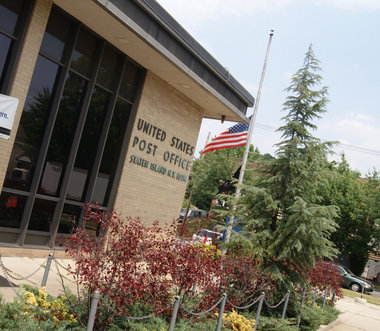
She moved back to Staten Island and there lived in increasing anonymity until the age of 82. It was a calling Polly apparently abandoned. In 1846, a New York publisher distributed a fantastically overheated pamphlet damning Polly as a vampirish slattern ''possessing an undying enmity to the human race, an insatiable thirst for blood, following murder as a calling.'' The popular press was not quite done with Polly Bodine. Her first words to her lawyer were: ''Can't I sue Barnum now?'' This time, after more than two years in jail, Polly was acquitted. Polly's lawyers skillfully refuted the testimony of several crucial witnesses.
#EASY PASS STATEN ISLAND TRIAL#
Her third and final trial took place in Newburgh. Barnum's witch apparently had some magic on her side: Polly was convicted but the verdict was overturned. He portrayed her as a toothless ''witch'' of 70 - though she was half that age - savagely hacking away at her victims. Barnum added to the excitement with a wax tableau of Polly in his museum a few blocks from the courtroom. The Herald remarked on the crowds ''of highly fashionable female spectators, giving the courtroom all the appearance of some of our fashionable theaters.'' P. Women, particularly, seemed fascinated by Polly. This became an even more spectacular event than the first. In an attempt to find an unbiased jury, the second trial was held in Manhattan. ''For they manage these matters wretchedly in New York.'' ''This woman may, possibly, escape,'' wrote Poe. ''There cannot be a doubt as to the guilt of the wretched woman,'' The Post proclaimed.Įdgar Allan Poe threw in his two cents, filing a dispatch on the eve of the trial for a Pennsylvania newspaper. With its spicy brew of sex, greed and gore, the Bodine case was tailor-made for their brand of sensationalism and outrage - presumption of innocence be damned. The Richmond trial gripped New York, every word recounted in special editions of the new penny press newspapers like The Herald, The Sun and The Evening Post. In June, she came before the Richmond County Court for the first in a string of trials nearly as extraordinary as the murders themselves. Three days later, she gave premature birth to a stillborn boy, another ''illicit offspring,'' as The New York Herald put it. Other witnesses recalled seeing her wandering the streets of Manhattan in a daze. Polly was later spotted in a pawnshop on lower Broadway wearing a hooded cape and a green veil and hawking items from the victims' house. She was drinking gin and eating a slice of pie, looking weary and wary. 26, when Polly later claimed to be in Manhattan visiting Waite, a chambermaid saw her aboard a ferryboat departing Staten Island. Polly's behavior around the time of the murders did little to dampen such speculation. And fallen women were fair game for all sorts of speculation.'' ''It certainly would have affected how she was perceived. ''Abortion was a hot topic in 1843,'' said Amy Gilman Srebnick, a history professor at Montclair State University and the author of a book about the Mary Rogers case of 1841 (another murder that had recently shocked the city).

Within a few days, investigators had their suspect: Polly Bodine. Somebody had murdered mother and child - so violently as to break their bones and shatter their skulls - then set the house on fire to cover up the deed. Investigators quickly put together a chilling chain of events. Nineteenth-century court papers document the body's condition in grisly detail: ''The back part of the head was very much burned, part of the skull wanting, and the brain baked by the action of the heat.'' Furthermore, ''on the left arm, both bones of the forearm were broken, and one of the bones was white and clear, the other blackened by the heat.'' The body of the baby girl, discovered close by, was in even worse shape. Then one rescuer saw something in the kitchen near a charred basket of pumpkins and onions. At first, rescuers assumed they had gone away for the holidays. His young wife, Emeline, and their 20-month-old daughter, Ann Eliza, were home alone.Īs neighbors rushed to the burning house, though, Emeline and the baby were nowhere to be seen. The house stood adjacent to Polly's, about where the Perkins parking lot is today, and belonged to her brother, a schooner captain named George Houseman. 25, two boys returning home from a skating party saw smoke billowing from a house on Richmond Road. Staten Island in 1843 was a rural seafaring community of 10,000 residents living in hamlets. Her story begins on Christmas night in 1843.


 0 kommentar(er)
0 kommentar(er)
